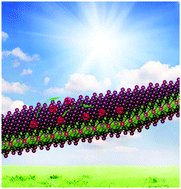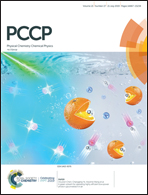Propose two-dimensional Sb2Te2X (X = S, Se) with isotropic electron mobility and remarkable visible-light response†
Abstract
Two-dimensional (2D) crystals are emerging materials for nanoelectronics, and computationally identifying novel 2D materials with distinct electronic and optical properties furnishes a vital first step for future photovoltaic technology. Herein, based on the density functional theory and Keldysh nonequilibrium Green's function formalism, we reported new members of the family of 2D Group V–VI compounds, i.e., Sb2Te2X (X = S, Se) compounds, which exhibited excellent dynamic and thermal stabilities. It was found that 2D Sb2Te2S and Sb2Te2Se possess moderate band gaps of 0.87 and 0.76 eV, respectively, and they are advantageous over other frequently studied 2D materials. Most surprisingly, it was demonstrated that Sb2Te2X has two excellent characteristics, i.e., high isotropic electron mobility surpassing 103 cm2 V−1 s−1 and remarkable optical absorption over the entire visible region with a high photoresponse (∼0.044 A W−1). The exceptional electronic properties in combination with fascinating optical properties illustrate the great potential of Sb2Te2X, for example, in photovoltaic devices, boosting a new area in the research of Group V–VI 2D semiconductors.



 Please wait while we load your content...
Please wait while we load your content...